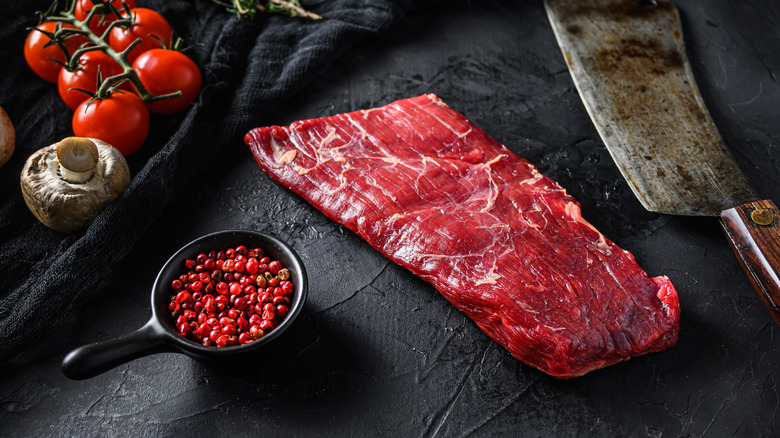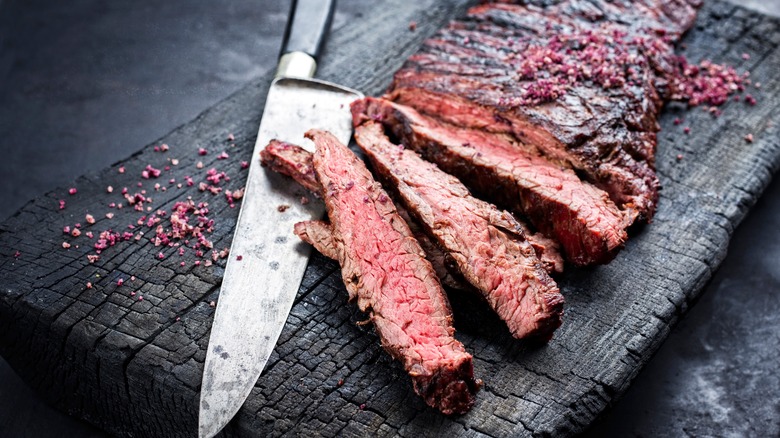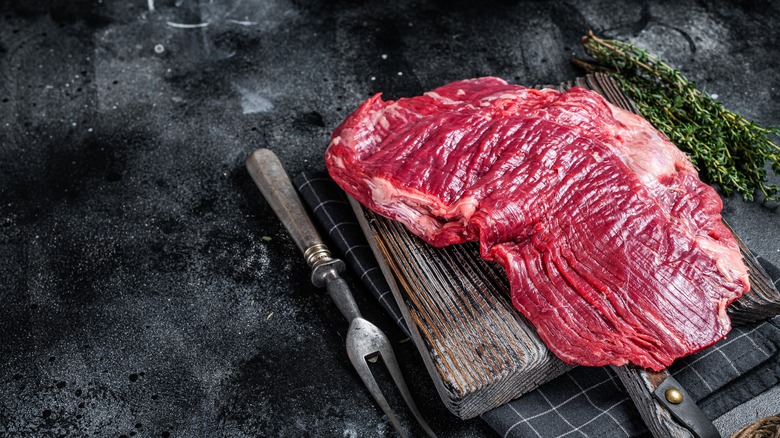Flap Steak: The Little-Known Meat Cut That's Deliciously Affordable
It's no secret that Americans love steak: We consume more beef than any other nation on Earth (although we're only third in per-person consumption behind Argentina and Zimbabwe). It's the country where the Texas beef industry is legendary. And our love of beef isn't limited to one cut. Though ground beef for hamburgers is one of our collective favorites and brisket is the king of BBQ meats, steak also rules the day, with cuts from ribeye to filet mignon and sirloin each having their merits.
But while there are multiple cuts when it comes to steak, there's one that provides all the benefits of some more highly-regarded cuts while also being cheaper than others: flap steak. Also called flap meat, bottom sirloin butt, bavette steak (in France), or fraldinha steak (in Brazil), flap steak provides a ton of flavor at an affordable price. The only tricky part is you have to cook it more carefully, owing to its shape and texture.
Flap meat has a lot in common with hanger, skirt, and flank steaks
Steak aficionados know all about flank, skirt, and hanger steaks already: They're not typically as highly-regarded as something like a ribeye, but they're high-quality cuts you can usually get for affordable prices for that exact reason. Heck, hanger steak is also known as "butcher's steak" because it's so good butchers used to keep it for themselves rather than selling it to customers. Flap steak fits neatly into this category, and is, in fact, from the same part of the cow as these other cuts: The cow's flank, just farther back than what's sold as "flank steak." Flap steak and flank steak are also the primary cuts you'll see sold as New England steak tips.
Like all those other cuts, flap steak tends to be thin, fibrous, and somewhat chewy, meaning it takes a little more work than a ribeye you just slap on the grill. Like those other cuts, though, the effort is well worth it, because flap steak is loaded with beefy flavor. Much like hanger steaks and skirt steaks, flap steaks should be well-marinated to help them break down (fruit juice works well here), prepped well, cooked carefully, and always cut across the grain.
Blast flap steak with a high heat
There are, however, a couple of things to know about flap steak that make it somewhat different from those similar cuts. The biggest is its thickness — or lack thereof: Flap steak is very thin relative to its cousins. As such, you have to cook it more carefully and for less time. Always use a high heat and short cooking time so the outside gets a nice char, but the inside stays a juicy medium-rare.
But the benefits are worth it. In addition to having a great flavor, flap steak tends to exist at a similar price point to its cousin skirt steak and well below both flank and hanger steak. Because it's so similar to those other cuts too, it can also be substituted for any of them without a loss in quality, leading to more affordable meals. So don't be afraid to give flap steak a try. It'll save you money, and you'll get a great meal out of it.


